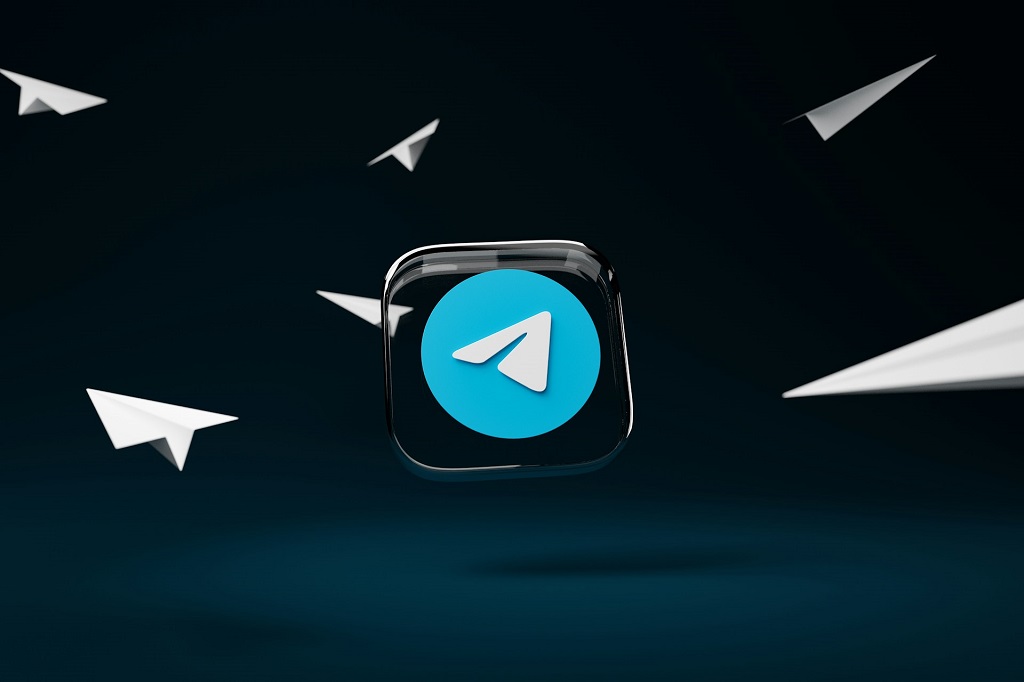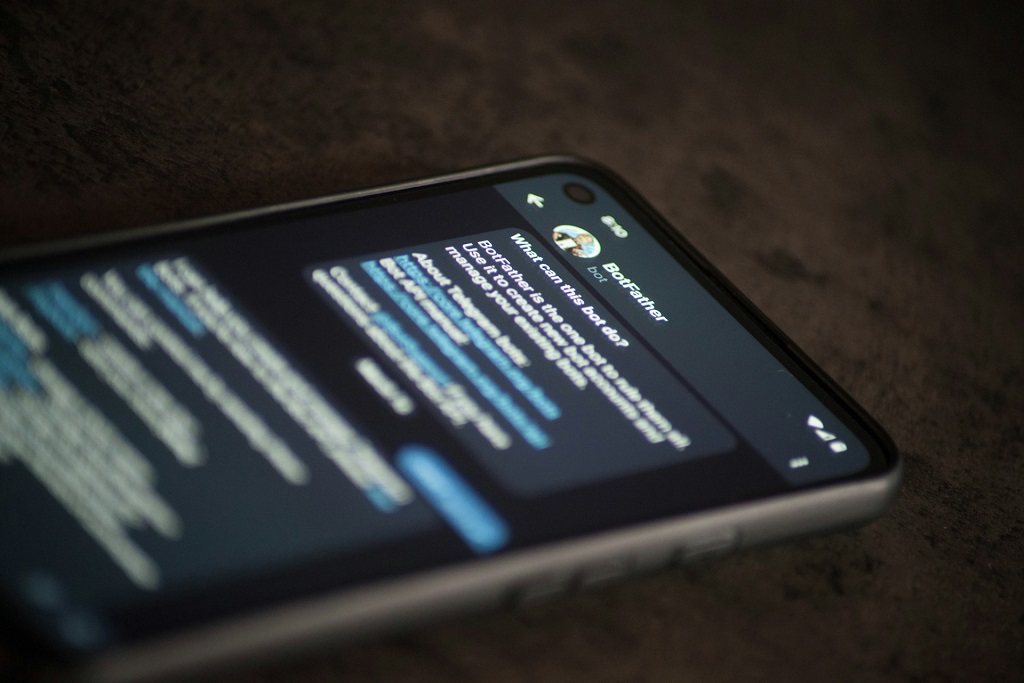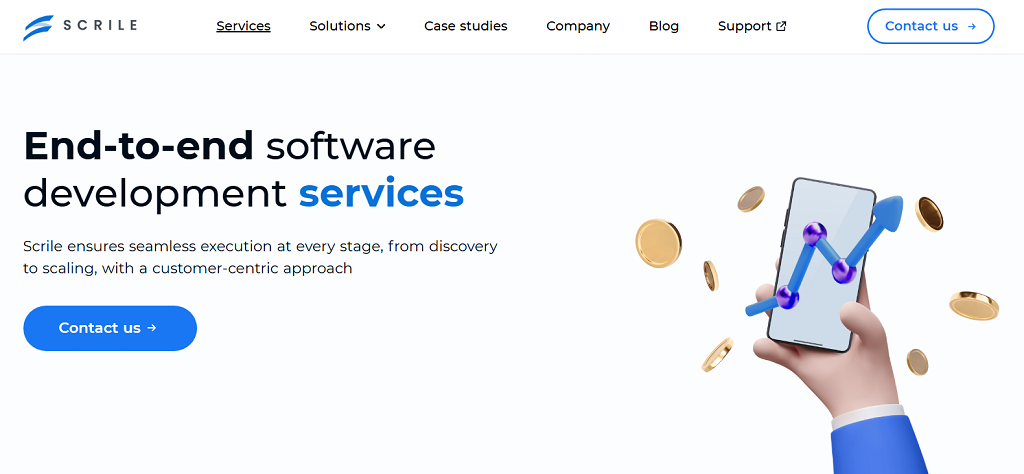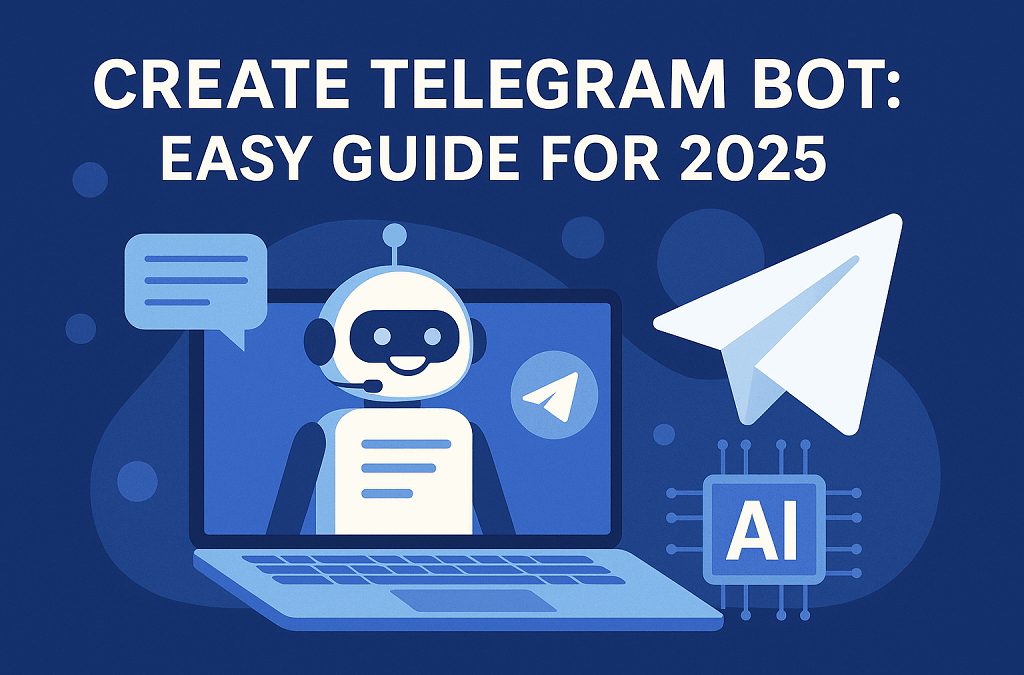Open Telegram in 2025 and it feels less like a messenger and more like a universe. You’ve got channels pumping out news, groups with thousands of members, and bots running behind the scenes doing everything from selling tickets to running customer support. They’re not a gimmick anymore — they’re the backbone of how people interact with brands, creators, and even local communities.
That’s why so many people now want to create Telegram bot of their own. Some do it to automate work, like handling FAQ messages so they don’t answer the same thing a hundred times a day. Others use bots to share exclusive content with subscribers, manage payments, or even build niche communities where the bot acts as host and organizer.
And the demand keeps rising. Telegram has passed 900 million active users worldwide, and millions of them touch a bot every single day without even thinking about it. Bots deliver reminders, process orders, send files, or connect users with AI tools.
This guide walks through the journey — from the simple “hello world” bot to advanced setups powered by AI. By the end, you’ll see exactly how bots work, why they matter, and how you can launch one yourself.
Why Build a Telegram Bot in 2025?

Scroll through Telegram today and you’ll notice something: half the time you’re not talking to people at all. It’s bots sending updates, answering questions, or nudging you to buy something. They’ve gone from novelty to necessity. If you run a business, a community, or even a personal project, learning how to create bot Telegram is like giving yourself an extra pair of hands that never sleep.
The beauty of bots is how wide the use cases run. A restaurant can take lunch orders in chat. A shop can process payments without a website. Creators set up subscriber channels that drip out content every morning. I’ve seen fan groups use bots to manage polls and events, while one adult creator runs an OnlyFans Telegram bot that handles paid updates without lifting a finger.
Here’s what bots do best:
- Push promotions, newsletters, or personal updates straight into a user’s chat.
- Act as the first line of customer support, answering repetitive questions instantly.
- Collect payments, donations, or subscription fees with a few taps.
- Deliver content — from breaking news to private lessons — automatically.
- Moderate and organize communities so humans don’t burn out.
And the kicker? They’re cheap to run compared to human teams. A small shop can avoid hiring extra staff just by letting a bot handle bookings and questions. Big companies save millions on support calls. Communities keep members engaged without burning through volunteer time.
Telegram already has the audience — close to a billion people using it every month. Bots are the glue that keeps them connected to the services, creators, and businesses they care about. If you’ve got an idea, odds are a bot can make it easier to deliver.
The Basics: How to Create a Bot in Telegram

When people look up guides on how to create a bot in Telegram, the answer is almost always the same: start with BotFather. This official account is Telegram’s gatekeeper for new bots, and every project — from a simple helper to a full AI assistant — begins there.
Open BotFather, hit /newbot, and follow the prompts. It feels less like coding and more like filling out a short form:
- Choose a display name.
- Pick a unique username ending with “bot.”
- Receive your API token — a long string of letters and numbers that unlocks access to your bot.
That token is gold. Keep it private, just like you would a password.
First Steps With BotFather
With the token in hand, it’s time to connect code. Beginners usually reach for Python or Node.js, since both have strong libraries ready to go. Using python-Telegram-bot, you can write a few lines, run the script, and watch your new bot reply “Hello, world.” It’s basic, but seeing that first message pop up in Telegram feels like magic.
From there, most people add features step by step. Common upgrades include:
- Quick commands that return weather updates or daily tips.
- A small database to remember user info.
- Predefined responses to FAQs.
Each feature works like stacking blocks. Start with one, test it, then move to the next. The best bots are built gradually, not in a single marathon coding session.
One last thing: guard that token. Don’t paste it into public code or screenshots, and rotate it if you think it’s leaked. It’s the key to your bot, and without it, everything stops.
Creating a Telegram bot is less about memorizing every command and more about understanding the flow: BotFather issues the token, your code listens for messages, and the bot responds. Once you’ve grasped that cycle, you’re already past the hardest part.
From Simple Scripts to AI-Powered Bots

Every Telegram bot starts out plain. You write a script that spits back an answer when someone types a keyword. Ask it “/hello” and it replies “Hi there.” Useful? Barely. But it’s the first brick.
The fun begins when you connect that little script to something real. Hook it to a weather API and suddenly the bot gives tomorrow’s forecast. Point it at a news feed and you’ve got headlines on demand. Tie it to a crypto exchange and your group gets live price alerts without opening a browser.
That’s when you stop seeing bots as toys and start seeing them as tools.
And then comes the bigger step: adding brains. An AI bot Telegram project doesn’t just follow a script — it talks back like a person. Link it to a GPT-style model or your own ML engine and the conversations change. Users can ask open questions, and the bot doesn’t fall apart after the second reply. That’s what people mean when they talk about Telegram AI chatbot — it’s the difference between an answering machine and an assistant.
Scaling Into Advanced Features
Once you’ve got a smart bot running, the list of upgrades is endless. A few of the ones developers actually use in 2025:
- Multi-language chat so one bot serves global audiences.
- Voice recognition that lets people speak instead of type, with instant speech-to-text.
- Built-in payments for subscriptions, donations, or selling digital goods right inside Telegram.
Stack these features together and the bot stops being an experiment. It becomes part of a business. Shops use them to sell directly in chat. Teachers run tutoring sessions. Creators run entire subscription models.
It’s a slow build — script, then integrations, then AI. But that’s the path from “hello world” to a bot people actually rely on every day.
Best Tools and Frameworks for 2025

Once you’ve got the basics down, the next question is: what’s the best way to actually build? Developers in 2025 have a toolbox full of choices, from hardcore coding libraries to drag-and-drop bot builders. The right pick depends on how deep you want to go.
On the coding side, three names stand out. python-telegram-bot is the most beginner-friendly, with clear docs and a big community. Telethon digs deeper, giving you full access to Telegram’s API and letting you do advanced stuff like managing channels and accounts. aiogram sits in between — asynchronous, flexible, and perfect if you’re aiming for speed and scalability.
Not everyone wants to touch code, though. That’s where no-code and low-code platforms come in. FlowXO offers pre-built blocks, so you can drag together a working bot without typing more than a few lines. Manybot lets creators spin up bots directly inside Telegram with simple commands. Tars is aimed at businesses, helping them design conversational flows for customer support or sales.
Each tool has its trade-offs. Libraries give you maximum control but require coding chops. No-code platforms get you running fast, but you’ll hit limits if you want advanced AI features or complex integrations.
Here’s a quick look at the landscape:
| Tool / Framework | Code/No-Code | AI Support | Pricing | Best For |
| python-Telegram-bot | Code | Yes | Free | Beginners, simple bots |
| Telethon | Code | Yes | Free | Advanced devs, full API access |
| aiogram | Code | Yes | Free | Scalable, async projects |
| FlowXO | No-Code | Limited | Freemium + Paid | Quick prototypes, small teams |
| Manybot | No-Code | Limited | Free | Creators, hobby projects |
| Tars | Low-Code | Yes | Subscription | Businesses, customer support |
Real-World Examples of Telegram AI Bots
It’s one thing to talk about bots in theory, but the real proof is seeing them in action. Across industries, Telegram AI bots are now taking on jobs that used to eat up time, money, and human energy.
- E-commerce support: Consider an online shop with hundreds of daily queries on sizes, shipping, or returns. Instead of a small team handling all, a Telegram AI bot responds instantly. It solves mundane issues, guides clients through orders, and hands over only the problematic cases to human agents. The result: faster resolution and lower costs.
- Healthcare assistants: Clinics and hospitals are using an AI Telegram bot to let patients book appointments, check clinic hours, or get answers to simple medical FAQs. It doesn’t replace doctors, but it removes a mountain of admin work, cutting wait times for everyone.
- Education helpers: Schools and private tutors run Telegram AI bots that deliver quizzes, reminders, or practice tests. Some even translate lessons into multiple languages, helping teachers reach students across borders without extra prep time.
- Adult content delivery: Creators are leaning on automation too. An OnlyFans Telegram bot manages subscriptions, sends exclusive updates, and keeps track of renewals. It means less manual admin and more focus on creating content that actually sells.
The lesson here is simple: when you create Telegram bot powered by AI, you stop treating it as a novelty. It becomes part of the daily workflow, handling the repetitive jobs that burn people out. From shops to clinics, schools to creators, the applications are growing — and the bots are already proving their value.
Building a Custom Bot With Scrile

By now, you’ve seen the power of bots — from simple helpers to full AI-driven assistants. But there’s a catch. Most off-the-shelf builders lock you into their design, their limits, and their revenue cut. If you want real freedom, the answer isn’t another template app. It’s to create Telegram bot with a team that builds it around your idea from the ground up. That’s what Scrile does.
Scrile isn’t a pre-packaged bot service. It’s a full software development team that creates custom solutions — tailored for businesses, communities, or creators who want control over how their bot looks, works, and earns. Instead of squeezing your idea into someone else’s box, you get the box built for you.
Some of the key features include:
- 0% commission monetization: keep everything you earn, from subscriptions to in-chat sales.
- White-label design: your name, your colors, your identity. Users see your brand, not a third party’s.
- Secure payments: integrated checkout flows with trusted gateways to protect both you and your customers.
- AI integration: connect to advanced models so your bot goes beyond scripted replies and actually converses.
Why Choose Scrile Service
Because every idea is different. A retail brand might need e-commerce integrations. A clinic may want patient booking and privacy compliance. A creator could be looking for a bot that delivers paid content automatically. Scrile takes those requirements and turns them into reality.
You’re not just getting code. You’re getting a system that scales, adapts, and grows with your business. Professional support is part of the package, so you’re never left wondering how to fix a broken feature or roll out an update.
Conclusion
Learning to create Telegram bot in 2025 is easier than ever. You can start with BotFather and a few lines of code, add integrations for news or payments, and grow into advanced AI features that handle real conversations. Bots aren’t side projects anymore — they’re powering online shops, healthcare systems, classrooms, and even creators’ subscription models.
If you’ve got an idea that deserves more than a template solution, don’t wait. Contact Scrile team today to launch a custom Telegram bot built around your brand, your community, and your goals.
FAQ
How long does it take to create Telegram bot?
It will also depend on what exactly you want your bot for. A basic model that simply follows commands can be up and running within a few hours with the help of BotFather and a minimalist script. Bots with AI capabilities, online wallets, or custom design take longer — at least several weeks of active development and debugging.
Are AI Telegram bots expensive to run?
Not necessarily. The costs mainly come from hosting and any AI model you connect. A small AI Telegram bot that handles simple conversations can run cheaply on cloud servers. If you’re adding complex machine learning features or processing heavy data, you’ll need stronger infrastructure, which raises costs. Still, most businesses find it cheaper than hiring full support teams.
Can I monetize my Telegram bot?
Yes. Many creators and companies already do this. You can sell subscriptions, run paid content channels, process one-time purchases, or accept donations directly inside Telegram. If you plan to create Telegram bot as a business tool, Scrile software development services can even help you set up secure payments and custom monetization models with 0% commission.

Polina Yan is a Technical Writer and Product Marketing Manager, specializing in helping creators launch personalized content monetization platforms. With over five years of experience writing and promoting content, Polina covers topics such as content monetization, social media strategies, digital marketing, and online business in adult industry. Her work empowers online entrepreneurs and creators to navigate the digital world with confidence and achieve their goals.


Interesting analysis! Seeing more platforms like this prioritize secure, verified RNG is a huge step forward for Philippine iGaming. The KYC process sounds thorough, building trust – crucial for long-term player engagement! Hoping for continued innovation.
Really interesting article! The focus on secure, fair gaming is key. I checked out a link; their verification process (KYC) seems solid – good to see that level of trust built in! Definitely a platform to explore.